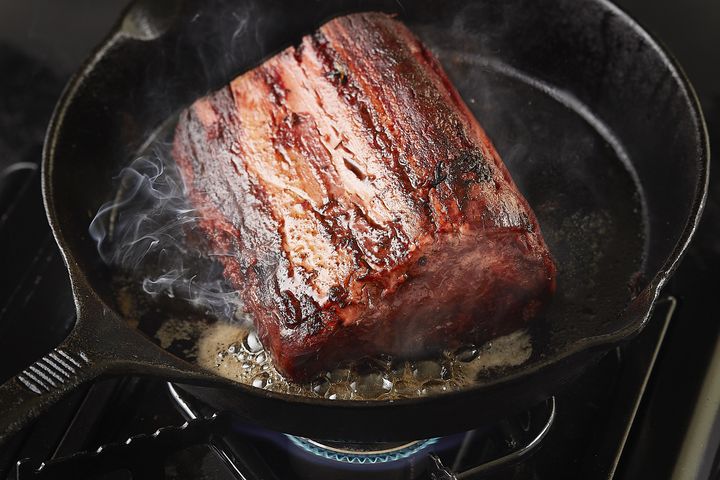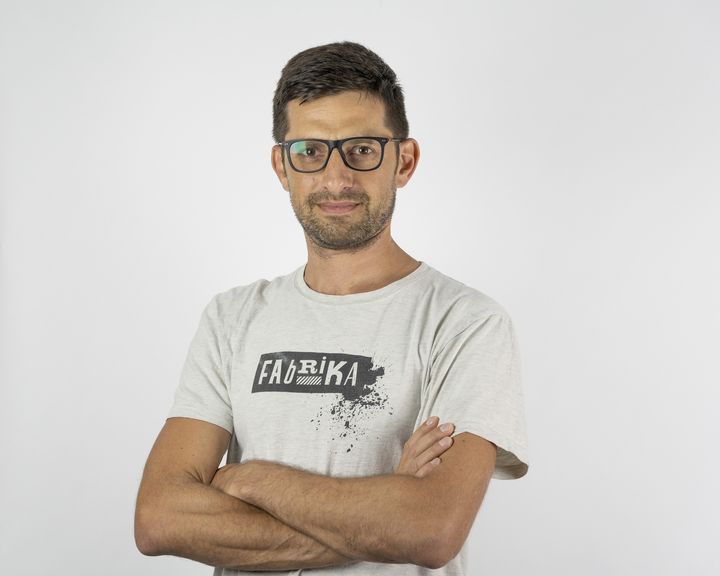
I spoke at length with Redefine Meat’s Head of Technology & Innovation, Daniel Dikovsky, to find out how they are able to 3D print steaks.
3D printed food is a highly unusual use case for our technology, and it’s being done by only a few companies.
We’ve seen 3D printed chocolate, cookie dough, cheese, peanut butter and similar squishy materials. But those are the easy forms of 3D printed food. Meanwhile, the Mount Everest of 3D printed food remains steak.
The reason for that challenge is that steak, unlike other 3D printed food materials, requires a very precise combination of properties in order for diners to accept it. It is definitely not acceptable to simply extrude material in the shape of a steak; it has to taste, smell, feel and behave in the same way a real steak would act.
Redefine Meat has been tackling this issue for several years now, and they’re attempting to solve this culinary dilemma with engineering principles.
From what I hear from Dikovsky, it seems Redefine Meat’s 40+-person team is almost at the finish line of their development process. In a recent dining experiment, a professional chef told them that eight of ten eaters would definitely not be able to tell the difference between a real steak and Redefine Meat’s 3D printed equivalent.
Their founder wanted to change how we make meat, and desired a way to create “animal-free meat” that did not involve animal farming in any way.
There are two approaches to do this that recent startups have attempted. One way is to use a culture process to “grow” actual meat cells in a controlled environment. The other approach, which is what Redefine Meat chose to pursue, is to use combinations of plant proteins to build meat-like material.
Engineering Steaks
I know what you are thinking: how could they even hope to approach the delicate nature of actual steak with plants? You’re probably remembering some type of horrible tasting “veggie steak” you saw in the discount bin at the supermarket.
That’s not at all what Redefine Meat is doing. Instead their engineering approach is attempting to 3D print meat print using complex combinations of materials that attempt to match the properties of meat. These would include not only taste, but also appearance, mouth feel, thermal behavior, nutrition and other factors.
For example, Dikovsky described to me their concept of “chewing resolution”. The idea here is that an eater would be able to detect, with their mouth and tongue, objects as small as 100 microns, but not any smaller. Similarly, there is an upper limit of about 2mm beyond which the mouth cannot properly resolve. This information was used to drive their extrusion designs.
Thermal properties is another interesting factor, as a meat sample might be subjected to several different thermal conditions: cold storage in the fridge; room temperature; frying/BBQing/boiling/baking; sous-vide bath; searing; and of course, eating. You can imagine the challenge of trying to design a material that behaves “correctly” in all those situations.
Dikovsky said they have faced “many technical challenges” in their 3D printed steak journey. The most complex, he said, was to truly identify a formal definition of meat. At first you might think this is silly, as everyone knows intuitively what meat is. However, if you’re designing a machine to produce meat, you must have a definition that’s in engineering terms.

Dikovsky himself is a chemist and materials scientist, and he’s had to essentially invent new ways of identifying these properties, such as the elastic modulus, adhesion properties or the visco-elastic behavior.
He says this is incredibly difficult because when eating, our mouths perform “crazy testing will all our senses.” We know that smell is an important factor in the eating experience, but there’s much more going on beyond taste and smell. We’re all very sensitive to molecules!
Steak 3D Printer
Redefine Meat then took all this research and built a machine that could output meat-like objects that met those properties. I don’t know the specifics of the machine, as they are still quite proprietary, but here’s what I do know:
The machine has a moderate build volume that allows Redefine Meat to print “slabs” of meat, rather than individual steaks. This allows the machine to be far more efficient, as you can then slice of steaks of the required thickness after 3D printing. This approach also allows the extrusion strands to be oriented correctly, just as they would be in real steaks.
The material for the machine is provided by Redefine Meat due to the requirement for precision; results could not be guaranteed if operators supplied their own materials. There are several different materials that would be 3D printed in a single “steak job”, and these are done with separate extruders. Dikovsky explains they “mix them on the tray”, and not externally.
However, materials would be shipped “dry”, making transport and storage far easier. Operators would then themselves add the required water, which makes up about 60% of the output meat.
Making and Selling 3D Printed Meat
I asked about Redefine Meat’s distribution strategy and initially their plan is to plant (pun intended) machines at meat distributors. They want to leverage the knowledge, experience and connections of existing meat providers.
Dikovsky says, “We will run with people that know how to sell meat.”
Evidently the few pilot users involved at this point say they are quite excited about the opportunity to collaborate. It may be that the Redefine Meat approach can provide highly consistent and healthy meat products (no antibiotics), as opposed to traditional meat products.
There are very significant environmental advantages to the Redefine Meat concept: instead of feeding cattle for literally years in gigantic fields, transporting them to potentially unsafe processing plants and doing so in a safe manner, there is a very different lifecycle to the eater’s plate.
Trucks of raw material (which apparently includes pea and soy proteins) are simply transported to the distributor to load into the machine for meat production. I’m told Redefine Meat is investigating the true environmental effect here, but it could be very large.
From what I hear it appears that they have cracked the problem of producing meat, and are on the verge of deploying this to the public. However, there are a number of implications that I’ll discuss in another post.
For now, you can only dream of 3D printed steaks unless you happen to work for Redefine Meat.
Via Redefine Meat
